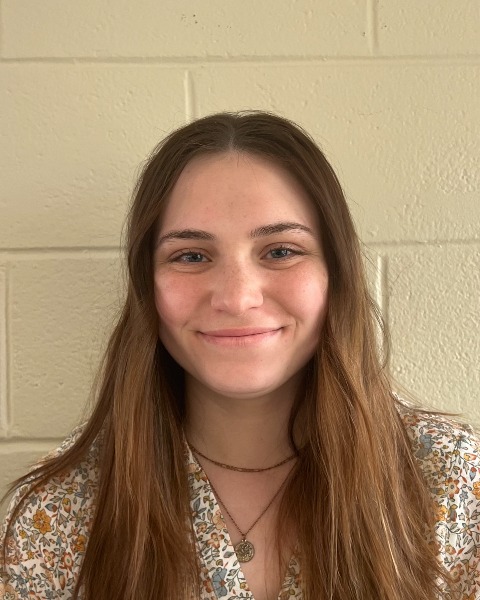Back
Emergency Medicine: Quality Improvement
Category: Abstract Submission
Emergency Medicine XIII
30 - A Mixed-Method Analysis of the Trauma Triage Process at an ACS-Verified Level 1 Trauma Center
Monday, April 25, 2022
3:30 PM – 6:00 PM US MT
Poster Number: 30
Publication Number: 30.406
Publication Number: 30.406
Loralai M. Crawford, The University of Rochester Medical Center, Wellsville, NY, United States; Adam Dziorny, University of Rochester School of Medicine, Rochester, NY, United States; Nicole A. Wilson, Golisano Children's Hospital at The University of Rochester Medical Center, Rochester, NY, United States

Loralai M. Crawford
Research Assistant
The University of Rochester Medical Center
Wellsville, New York, United States
Presenting Author(s)
Background: Triage of trauma patients requires complex decision-making. Inaccurate triage can lead to ineffective use of resources and poor patient outcomes. An understanding of the environment, workflow, and processes involved in triage decisions is necessary prior to introducing a novel machine learning-based clinical decision support (CDS) tool to improve triage accuracy.
Objective: We hypothesize that a mixed methods assessment of the trauma triage process will reveal opportunities for task improvement and identify effective CDS implementation strategies.
Design/Methods: We performed a mixed methods analysis of the trauma triage process at a large, urban, American College of Surgeons (ACS)-verified Level 1 Trauma Center. We conducted semi-structured interviews with stakeholders, coded results into themes, then performed workflow time studies, and coded times/observations. Lastly, we extracted electronic health record (EHR) access logs, aligned those logs to trauma notifications (7/1/21 – 10/31/21), grouped activities, identified EHR tools used at the time of notification, and quantified time-in-chart for patients. We combined these data with qualitative themes to characterize the trauma triage process.
Results: INTERVIEWS: Common themes became clear after semi-structured interviews (Table). WORKFLOW: Communication nurses spent 34% of their time documenting via the EHR (Fig 1), while also spending significant time documenting on paper (32%) and other tasks (17%). EHR: In total, 455 trauma events were identified (54 pediatric: age < 18 y [12%]; Fig 2A). Overall mean time in chart for communication nurses was 3.1 min (SD 2.2) and differed by User ID (p < 0.01; Fig 2B). An ED best-practice advisory was displayed in 264 (78%) encounters, a median of 0.89 min [IQR: -5.5, 15.4] after trauma event start. Other activities included flowsheet entries (19%) and sidebar reports (23%).Conclusion(s): While traumatic injuries disproportionately affect pediatric patients, triage process improvements will improve outcomes for all patients. Our analysis of the trauma triage process highlighted opportunities for task improvement (e.g., reducing double-documentation, decreasing distractions) and identified effective CDS implementation strategies (e.g. best practice advisory target that would reach >75% trauma activations). These results will be used to implement CDS tools, such as a machine learning algorithm aimed at minimizing bias and variability in the triage process. Broad themes and opportunities for process/quality improvement from this study can be generalized to institutions where trauma triage is a significant challenge.
Loralai Crawford's CVLoralai Crawford CV.pdf
Figure 1. Percentage of time spent on tasks by communication nurses..jpg) The majority of time spent on EHR documentation (EHR), followed by paper documentation (Paper), and telephone communication (Phone).
The majority of time spent on EHR documentation (EHR), followed by paper documentation (Paper), and telephone communication (Phone).
Objective: We hypothesize that a mixed methods assessment of the trauma triage process will reveal opportunities for task improvement and identify effective CDS implementation strategies.
Design/Methods: We performed a mixed methods analysis of the trauma triage process at a large, urban, American College of Surgeons (ACS)-verified Level 1 Trauma Center. We conducted semi-structured interviews with stakeholders, coded results into themes, then performed workflow time studies, and coded times/observations. Lastly, we extracted electronic health record (EHR) access logs, aligned those logs to trauma notifications (7/1/21 – 10/31/21), grouped activities, identified EHR tools used at the time of notification, and quantified time-in-chart for patients. We combined these data with qualitative themes to characterize the trauma triage process.
Results: INTERVIEWS: Common themes became clear after semi-structured interviews (Table). WORKFLOW: Communication nurses spent 34% of their time documenting via the EHR (Fig 1), while also spending significant time documenting on paper (32%) and other tasks (17%). EHR: In total, 455 trauma events were identified (54 pediatric: age < 18 y [12%]; Fig 2A). Overall mean time in chart for communication nurses was 3.1 min (SD 2.2) and differed by User ID (p < 0.01; Fig 2B). An ED best-practice advisory was displayed in 264 (78%) encounters, a median of 0.89 min [IQR: -5.5, 15.4] after trauma event start. Other activities included flowsheet entries (19%) and sidebar reports (23%).Conclusion(s): While traumatic injuries disproportionately affect pediatric patients, triage process improvements will improve outcomes for all patients. Our analysis of the trauma triage process highlighted opportunities for task improvement (e.g., reducing double-documentation, decreasing distractions) and identified effective CDS implementation strategies (e.g. best practice advisory target that would reach >75% trauma activations). These results will be used to implement CDS tools, such as a machine learning algorithm aimed at minimizing bias and variability in the triage process. Broad themes and opportunities for process/quality improvement from this study can be generalized to institutions where trauma triage is a significant challenge.
Loralai Crawford's CVLoralai Crawford CV.pdf
Figure 1. Percentage of time spent on tasks by communication nurses.
.jpg) The majority of time spent on EHR documentation (EHR), followed by paper documentation (Paper), and telephone communication (Phone).
The majority of time spent on EHR documentation (EHR), followed by paper documentation (Paper), and telephone communication (Phone).